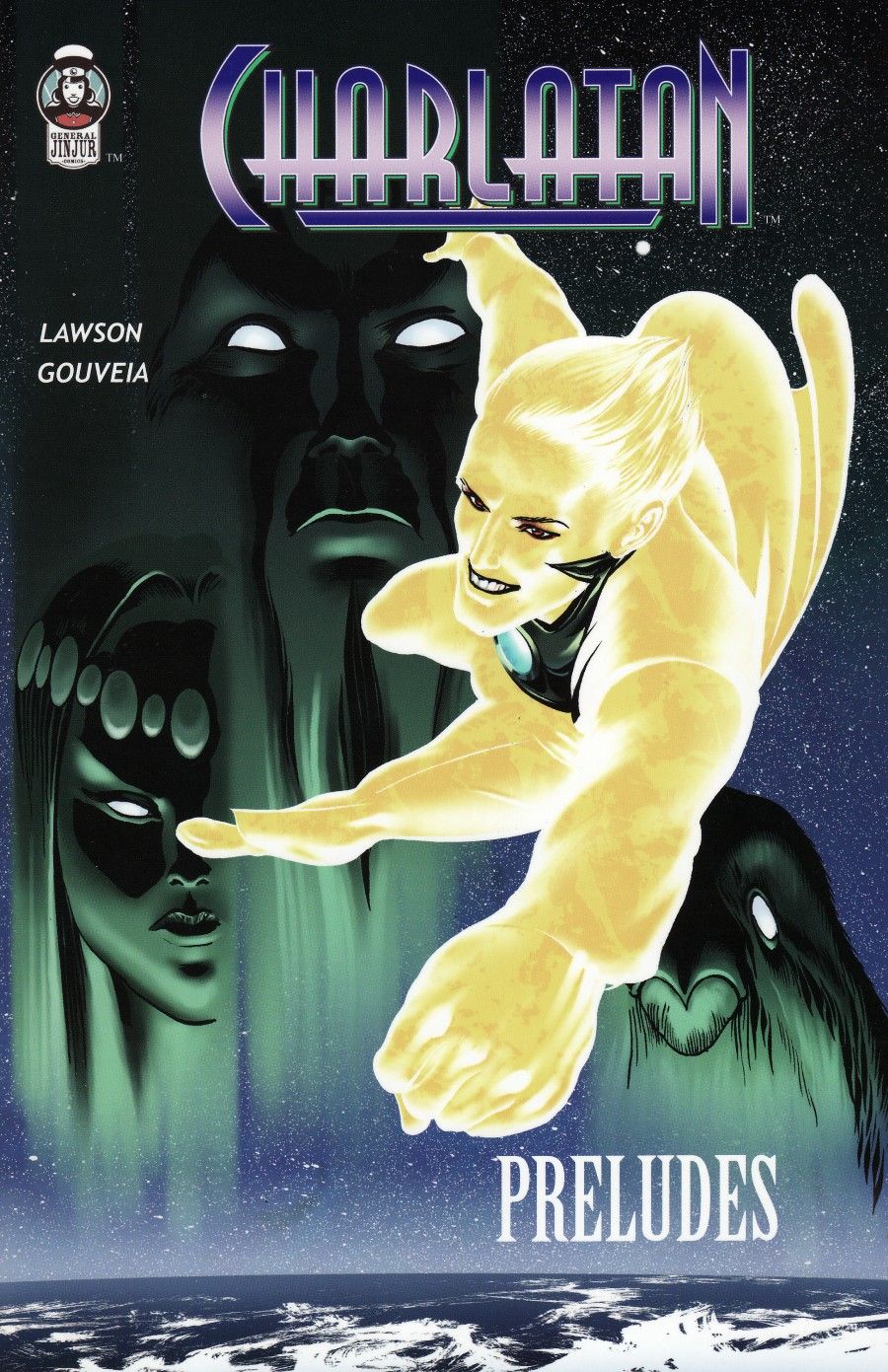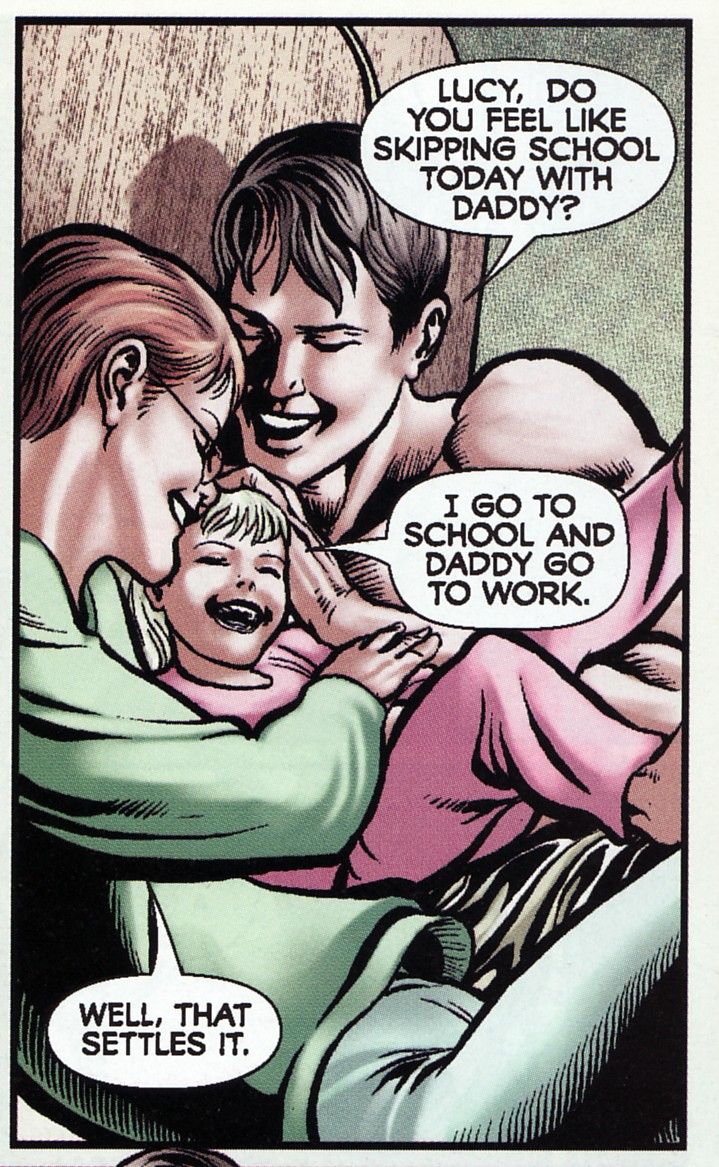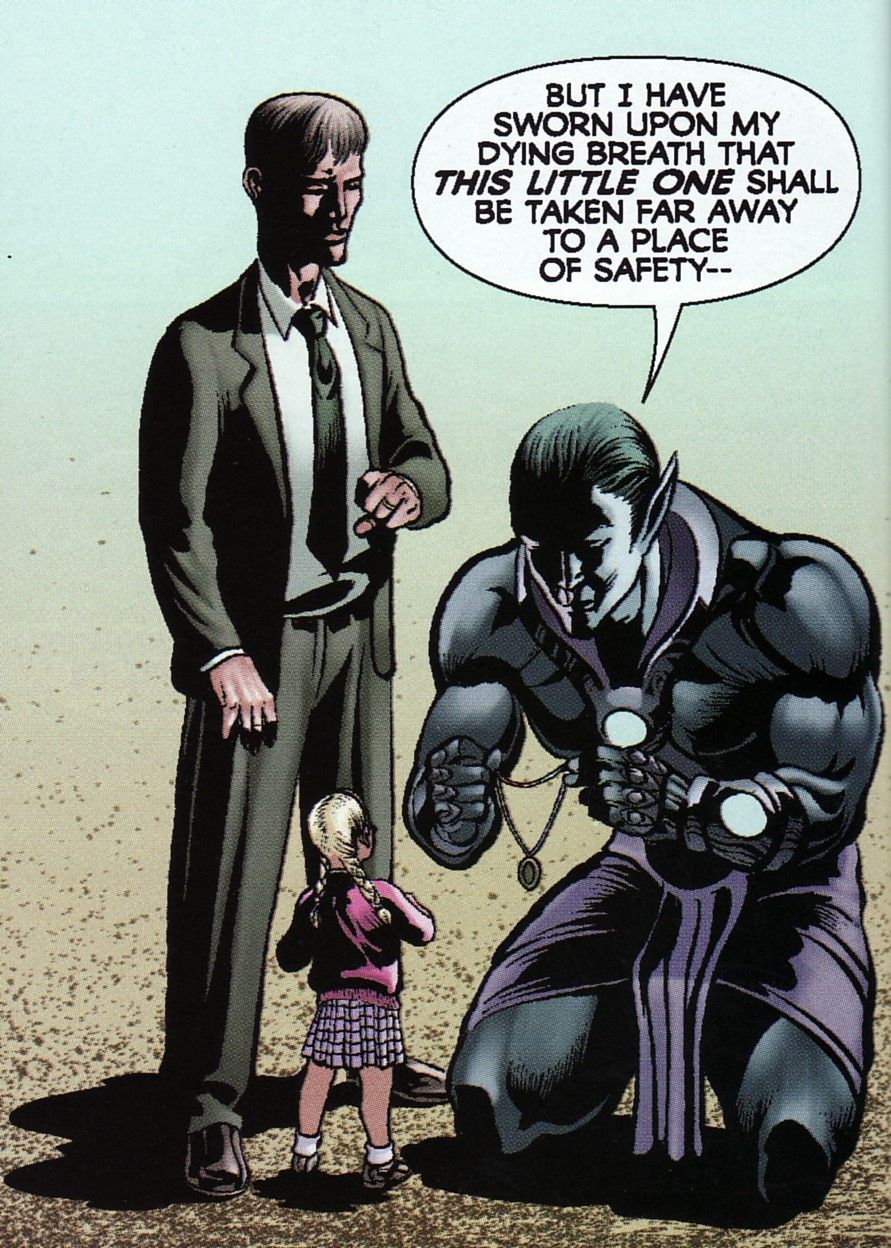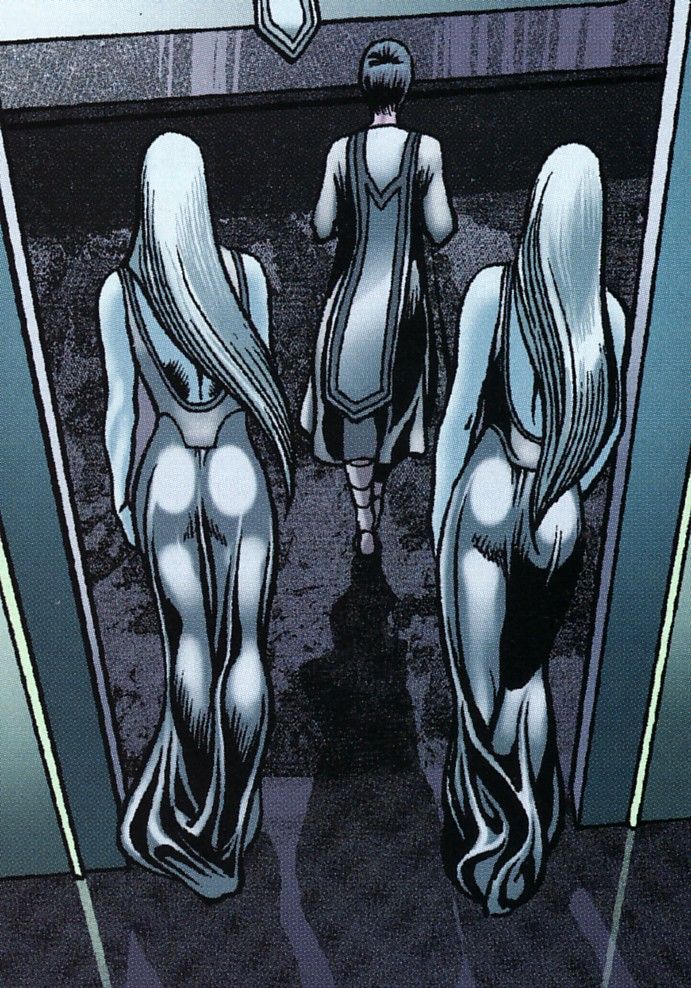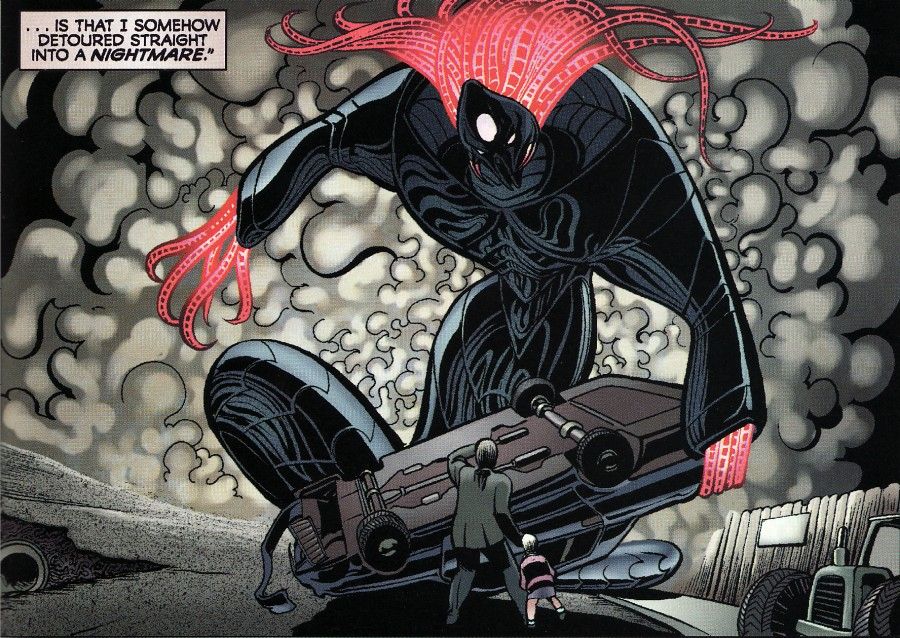Written by Gil Lawson; Illustrated by Eliseu Gouveia
General Jinjur; $14.95
I don’t think I’m a superhero fan anymore. Not as a genre anyway. I still have my favorite Marvel and DC characters, but I’m fond of them because I grew up with them and want to keep reading about them. By themselves, costumed heroes aren’t enough to get me immediately interested in a new story. In fact, whenever I hear about a new superhero comic from a new publisher, I have a hard time paying attention. If the word “universe” is mentioned, I pretty much write it off. Isn’t it conventional wisdom by now that new superhero universes are an automatic fail anyway? No one but Marvel and DC has really been able to sustain one for very long.
I’m doubtful that the Charlatan universe (called the Jinjurverse by its creators) is going to be the one to break that pattern. There’s reason for hope in this first volume, Preludes, but history is against it and the book is flawed enough to make me skeptical about its chance of success. That’s too bad in a way, because there are also some very nice things about Preludes that make me want to see it do well.
Charlatan is the story of a young family faced with a sudden, impossible decision. Augie and Mary Halford are a likable couple with a sweet little daughter named Lucy. Augie’s kind of a slacker, but Mary is patient and not opposed to kicking her husband’s butt every once in a while to get him moving in the right direction. Lucy’s a joy. Not just to her parents, but also to me as a reader. She’s kind and funny, but not too mature for her age. A real, delightful little girl.
In the first third of the book, writer Gil Lawson spends just enough time helping us get to know the Halfords without letting the story drag. Pretty quickly, Augie and Lucy are attacked on the way to Lucy’s school by some kind of enormous, alien robot. A tough, blue-skinned alien eventually shows up to help defeat the robot, but not before Lucy slips her lovey – an old piece of jewelry she found in the backyard – around her daddy’s neck, transforming him into a powerful being of light.
Once the battle’s over, the alien explains that the robot was after someone called the One Defender, a sort of celestial messiah who appears every so often as a different person in order to defend the universe against those who would destroy it. In a Terminator-like move, the robot wanted to kill the One Defender before she was powerful enough to defend herself. That’s right: “she.”
For the first time in history, the One Defender is a human: Lucy Halford. That’s where Augie and Mary’s awful decision comes in. Once convinced that the entire universe is truly at stake, do they let the aliens take their daughter away to train her for her new role? It’s an intriguing dilemma that Lawson and artist Eliseu Gouveia present very well. The Halfords and their relationships with each other are so grounded and real that I became emotionally invested in them and their decision.
Making it even more interesting is the mystery of why Augie is given power by the necklace. The aliens note that he’s not nearly as powerful as the One Defender would be, but they also admit that this has never happened before. Why is Augie different? Even more than the mystery, I love the idea that Augie is kind of standing in as an inferior, superhero regent for his daughter until she’s able to take the One Defender role on for herself. If – that is – Augie and Mary agree to the aliens’ plan.
Unfortunately, it’s shortly after the book’s central conflict is revealed that the story starts to stall. Augie and Lucy are taken to the aliens’ homeworld where Augie is given the complete history of the One Defender. Pages and pages are spent on exposition and Augie’s arguing with the aliens about Lucy’s destiny. The aliens prefer to have Augie’s blessing because it’ll be better for Lucy’s emotional wellbeing if she’s given up willingly. It’s not until the last third of the book that the story picks up again as Mary is reintroduced to the storyline and a final decision has to be made.
Apparently only one parent needs to sign off on the training, so if Augie won’t do it then the aliens hope Mary will. I don’t quite get that and it’s one of a couple of important questions the book leaves unanswered. If the point is Lucy’s emotional and mental health, how does potentially turning her parents against each other serve that?
I’m giving Lawson the benefit of the doubt and noticing a possible, unspoken explanation. Perhaps the aliens don’t truly care about Lucy’s welfare. That may have been the original rationale for requiring parental consent, but by this point the aliens may just be seeking permission because their tradition demands it. There’s only slight evidence for that in the story, but it’s a valid, possible reading. One of my other unanswered questions involves a spoiler, so I’ll leave that alone, but there are other flaws as well. Why, for instance, don’t Augie and Mary have the option of staying in space with Lucy to oversee her training? We’re not told.
The art’s okay, but it improves dramatically the further it gets from depicting people. Gouveia has a great imagination and comes up with some very cool designs for alien technology and architecture. There are also a few, not-so-humanoid aliens that are also nice, but his people look plastic, out of proportion, and their clothes don’t really fit or drape the way they’re supposed to.
Lucy calls her lovey/necklace “Toadums,” which doesn’t make any sense (it’s a generic, circular amulet; not at all toad-like) until you realize that it’s actually a “totem.” It’s an overly cute gag that doesn’t work logically.
My biggest concern about the book though is something that’s pretty easy to ignore in Preludes, but has an overshadowing effect on my anticipation of future volumes. That’s the teasing of the Jinjurverse. Scattered throughout Preludes are throwaway scenes that have nothing to do with the Halfords’ problem, but show various other costumed heroes and villains back on Earth doing what costumed heroes and villains do. Maybe these scenes actually are closely connected to the Halfords and the One Defender, but you can’t tell it from reading the book. It just comes across as an attempt to quickly expand the universe for the sequel. The trouble is that we’re not told enough about any of these other characters to care about them. And that’s directly related to my problem with quickly developed superhero universes in the first place.
Lawson and Gouveia seem committed to the development of the Jinjurverse, but I’d much prefer a series that focused squarely on the Halfords. Their story needs some tightening around the middle, but it’s a solid story all by itself. Adding to it just for the sake of adding to it accomplishes nothing. It only waters down the good story that’s already there. Superhero universes for the sake of superhero universes also accomplish nothing. They only increase the noise level so that you’re distracted from what you really want to read about. Wouldn’t it be better to let the Halfords tell their story and then spin off other concepts – if there’s a demand – as they organically develop from the main plot?
If you’re going to try to introduce a new superhero concept to the market, you’ve got to have a strong story to tell. Superheroes for their own sake won’t get you readers. Charlatan has a strong story to tell, if only Lawson and Gouveia will hone in and tell it well, without being sidetracked by the desire to build a franchise at the same time.
Two out of five enormous alien robots.


